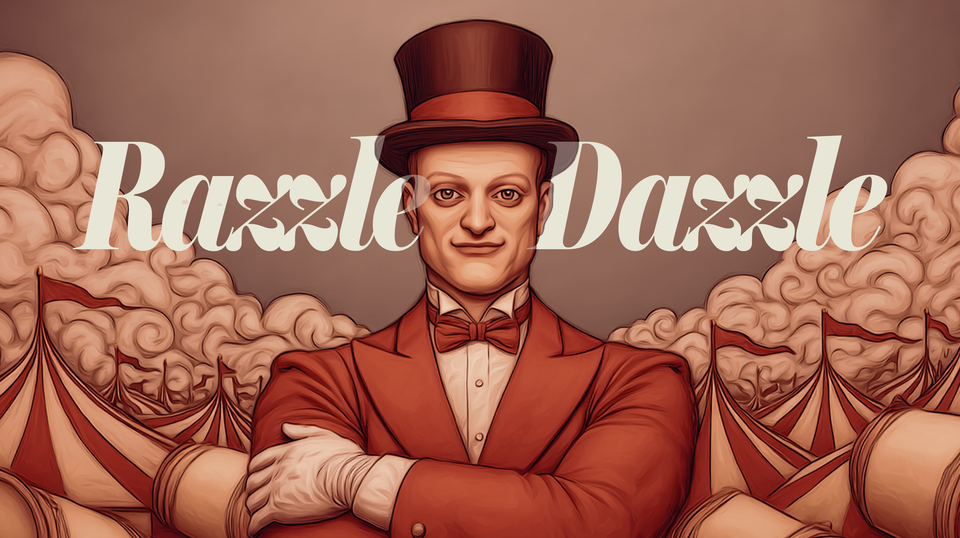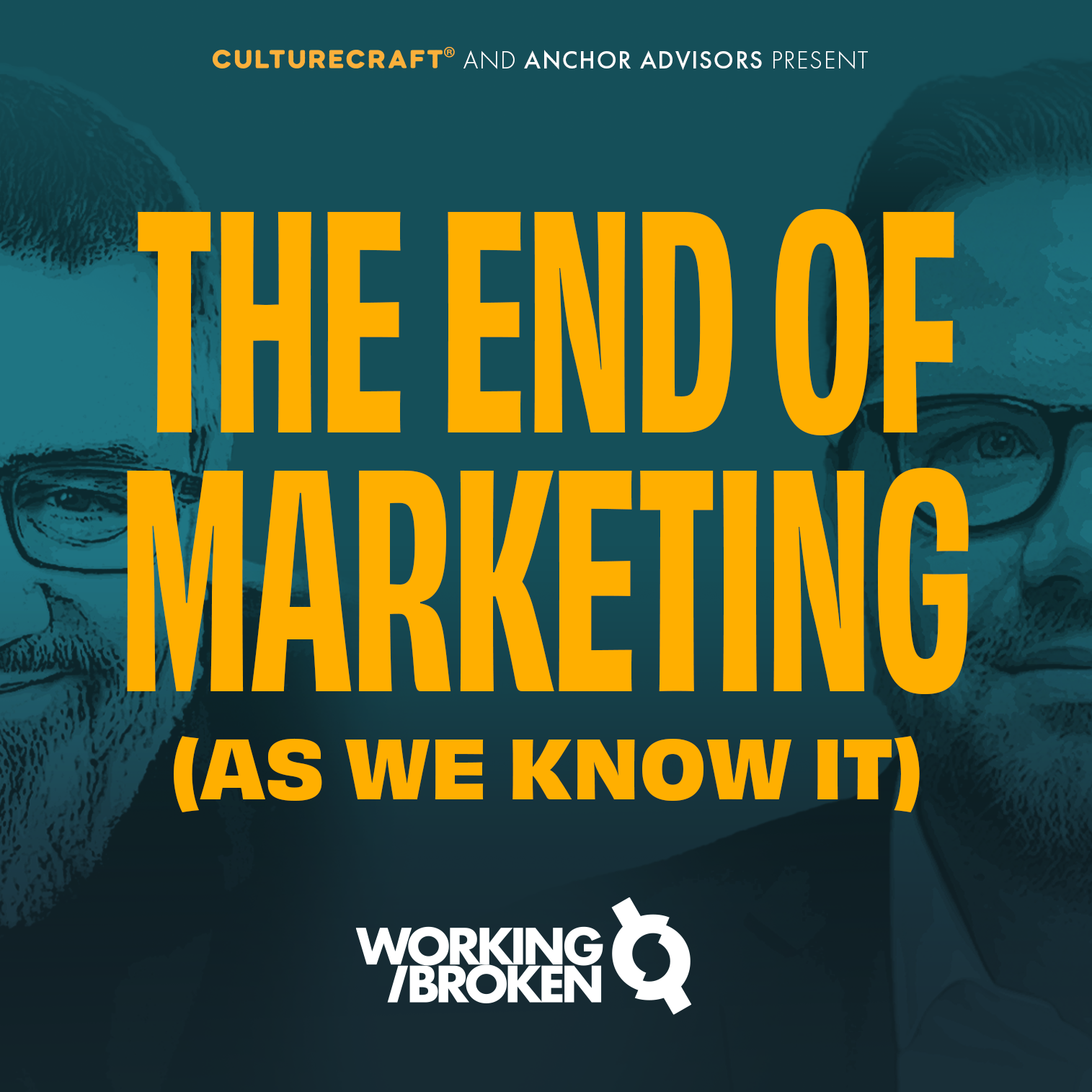
Edition 134: What if this is the end of marketing as we know it?
This newsletter reaches two different audiences: those deeply involved in marketing and those who rely on them. Often, hitting the Venn Diagram between these two groups presents a challenge. But what matters to all of you is the milieu in which we grow ventures. And this week, that soup, got a lot more murky.
Sora 2 and the falsification of everything, including you.
This week is one of those weeks, but it's all the more critical. Some of you have been deep in the zeitgeist around Sora 2, the latest dump from The Church of AI run by Sam Altman (with over a million downloads and counting). Officially, I am not anti-AI or even anti-LLM (in very narrow use cases) but am broadly anti-AI hype which is sucking capital out of the economy. A massive marketing play powered by press-releases and dramatic ridiculous statements, and has positioned the large platform LLMs (ChatGPT, etc.) as basically solutions in search of problems they can solve 90% of the way and give execs the freedom to lay off some people.
This is bad for execs. The research is in, firms are spending millions on LLM projects that don't work that they are now unwinding. LLM adoption by enterprise firms peaked at the beginning of the year and has since declined. Not good news for a trillion $ bubble.
That is bad for workers. Obviously for those laid off, but also for those who are now being held to imaginary standards of imaginary outputs that have little to no proven use cases. People are being told: "Here is an app we don't fully understand, use it to save us money." This is categorically bad leadership.
This is bad for the economy. Seven companies delivering press releases about how their going to buy $1-10 billion in product from each other in a circular fashion to fluff stock prices, lower borrowing costs, and appease stockholders in the short term, is a page out of Elon Musk's worst playbook. It's also how you build a bubble on purpose with a totally careless glance at the consequences.
This is bad for the AI industry. I have so many friends who are doing interesting work in targeted LLM deployment with discreet data (and copyright protections), people in RAM and deterministic models. The kind of AI that isn't playing games with reality. It's doing real augmented intelligence on real data. All of those firms are having to do excess branding and positioning work to say "we're not those hype factories, we're better" which is incredibly hard work. It's also now required if you're going to claim your product is in the AI space.
Sora 2 is the latest in the slop parade, producing the above effects. It's both a fake video creator that replicates known people (deep fakes) and owned IP (movie characters, etc.), which is going to produce a legal implosion that is all but guaranteed to go all the way to the Supreme Court. In the meantime (which will take years), it's technically a social media app, and is slowly eating other social media platforms alive. Deep fakes are showing up on LinkedIn, and Facebook is barely a place for humans anymore, and everything in between. Tell me again why brands should use social as their primary vehicle for connecting with customers?
The gap between digital and reality is now an unmanageable chasm. The web's most capitalized resources are laser-focused on building lying machines. Even when the bubble breaks, our online spaces are poisoned for truth and trust. If it's online, there's a very real chance it's not real. And that changes everything.
Marketing is wrapped around the lying machine
Let me say something I probably shouldn’t:
Most of what we call marketing right now is just noise.
No signal.
No resonance.
No trust.
Not because the people behind it are incapable of producing resonance, connection and trust, but because they are trapped between corporate expectations of what marketing is (trapped in 2018) and the tools they've spent their careers selling to their bosses.
We’re still pretending we live in a world where people click, convert, and comply. But that world doesn’t exist anymore. Over 50% of web traffic is bots. What's being clicked on is a mix of deep fakes, SPAM, and coercive algorithmic nudges that entice us into rent-seeking relationships that wrap their claws around our subconscious. Extraction all the way down.
If you’re a founder, a fractional, a creative leader, you’ve probably already felt this. You followed the playbooks. You built the funnel. You chased the metrics. And somewhere along the way, the whole thing stopped working.
But we are now beyond the closing of the web as a reasonable tool for dependable marketing. We are at peak trust decay, resetting the expectations of what every firm has to do to be believed in any relationship you have.
The rise of trust resistance
- People don’t want persuasion. They want to feel like they already belong in your orbit. The problem is that it requires a complete inversion of the old-school marketing funnel. You've got to selectively lead with relationships where you are most likely to build trust. Not spam people into submission until they finally allow you to book a call.
- Tactics are becoming expensive commodities. That brilliant LinkedIn carousel format? Everyone’s doing it. The talking head video? It's now a deep fake. Those "SEO keyword hacks"? Totally sublimated by Google's AI summary.
The tactical hamster wheel is full of clanker bot hamsters that only make your brand seem less credible... simply by participation. And the costs are going up. AI was supposed to make the content game quick and easy. What's made it is noisy and dull. And differentiating from that (with all the attention killing it does) is harder than ever. - Attention is empty. We’re living through attention inflation. The attention economy was built to force every business in America on the ad platforms that Google and Meta sell. It worked, and now there's no attention to be had. Now they're not selling attention. They're selling dopamine hits that suck people into addictions. Is that what you want for your future clients? Everyone’s spending more and getting less.
In this economy, trust is the only currency that holds value. But no matter how trustworthy you feel, the impact of deception and gamesmanship everywhere has even your existing customers on their emotional heels. Leaving everyone wondering... am I being Deep Faked... all the time?
Wondering how dependent your firm's growth is on these broken digital tools that are only going to cost you more money and more credibility in the year to come? Want to know your options? Let's talk.
Breaking through non-reality AKA the path to marketing that works
The core principles of what it takes to build a buying community of happy clients were abandoned in the digital marketing revolution. That revolution produced a deep fake autocracy. So back to principles we must go:
- Deep understanding of the emotional framework of a narrow client that you actuall know and like. This happens through structured conversations, expectation alignments, and intentional empathic design.
- Offering and CX design that incentivizes your ideal future client and focuses on incremental and careful invitations to trust. Whatever you're saying, they don't believe you, so your actions matter. How you say what you say and where you say it matters more now than ever. Save your blog posts.
- Relationship-first market building. We're not starting with a list of email addresses. We're starting with relationships and letting those relationships produce more relationships. Referrals. Community. Networks. Value sharing and partnerships.
- Radical POV. You have to believe something about the world you're making. And you have to turn that belief into something remarkable for a client you love. Playing to industry norms will get you firmly on the expensive sidelines.
Building a community of future buyers requires the clarity to say:
“Hey. I see you. I know you. How can I help you? I made this for you.”
How you say that, to whom, and where is dependent on a coherent strategy of all of the above.
We Went Deeper on This in the Pod
Brad and I cracked open this whole thing in the most recent episode of Working/Broken. It’s called "The End of Marketing as We Know It” and it’s one of my favorites we’ve done. If you’re a little tired of pretending the old game still works—and a little scared of what’s replacing it—you’ll feel seen.
Listen here: Episode 15: The End of Marketing as We Know It - Trust is All We Have Left (or search “Working/Broken” wherever you get your podcasts)

Stay brains on, heart open, forward progress.


